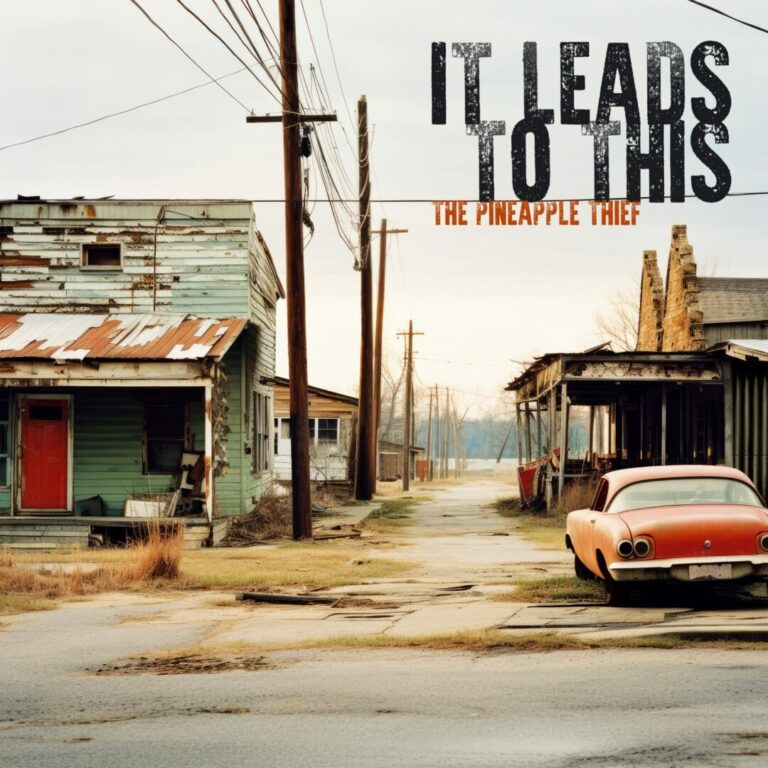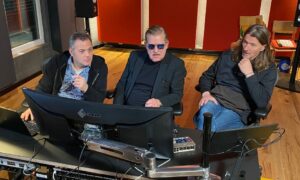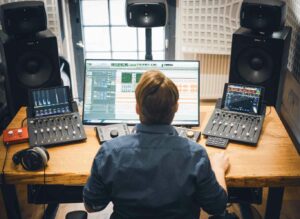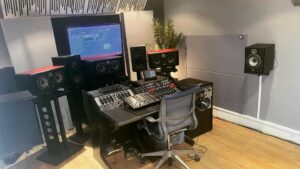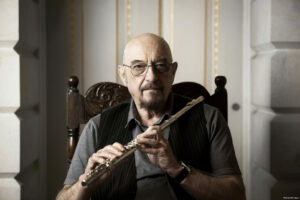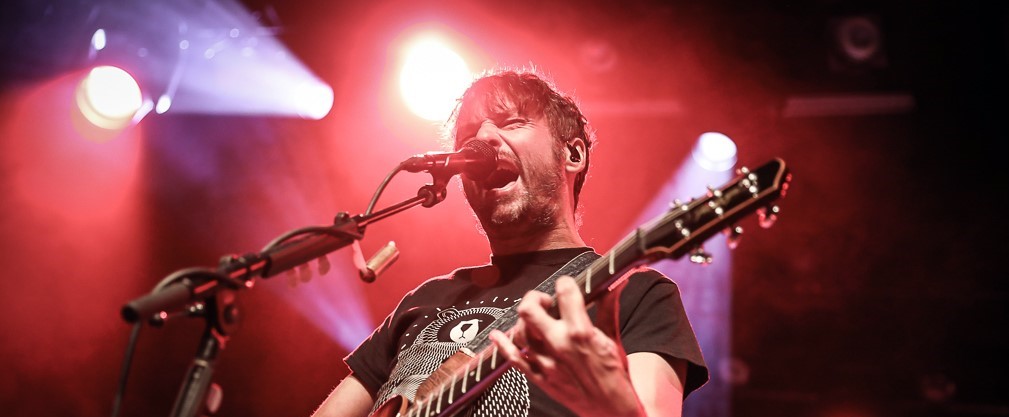
In our interview with The Pineapple Thief frontman Bruce Soord, we talked about his musical career, his role as a sound engineer and his experiences with Dolby Atmos. From his beginnings as a teenager to setting up a Dolby Atmos-compatible mixing room, Bruce provides exciting insights into his career. The interview was conducted by Christoph Diekmann. (Photo by Kaley Nelson Photography)
Hi Bruce, thank you for taking the time to tell us a bit more about your music and your work as a sound engineer. You are solo artist, frontman, guitarist and songwriter of Pineapple Thief and mixing engineer for many productions of other artists. How did you become an artist and then get behind the mixing desk?
Yes, I discovered my love of music when I was 14. Before that, I was just a typical teenager who liked pop music. But then I came across the progressive rock of the 70s through the Alan Parsons Project. That was the beginning of my musical journey. I bought a guitar and formed a school band. At the end of the 90s, I set up my own studio and used the digital technology that was affordable at the time. This required a lot of technical know-how, but luckily I was a bit of a techie. I started producing my own music at home, which wasn’t so common back then. Over the last 25 years I have honed my skills and built a fully equipped mixing room that is now Dolby Atmos compatible.
Would you say that your path was mainly characterised by learning by doing?
Absolutely. In the beginning I finished a mix, thought it sounded great, and then I compared it to some really great sounding records and wondered why mine couldn’t keep up. There was no magic solution, it was a gradual process of understanding the intricacies of mixing and recognising the importance of performance and sound quality. When my acoustic guitars sounded good, for example, it was because I had invested in high-quality acoustic guitars. It’s not rocket science.
Yeah, there no miracle needed [lacht]. As a musician and sound engineer, how do you balance your creative and technical roles in the studio?
To be honest, it’s a kind of juggling act. When I write and record music, I’m in a very creative mindset and try not to prioritise the technical considerations. The music should flow naturally. However, there are times when I have to step into the role of sound engineer to solve technical problems or make creative decisions that affect the mix. It’s about finding the right balance and knowing when to switch between the two roles. Sometimes it helps to take a step back and rework a mix with fresh ears to make sure I’m making the best decisions for the music.
When you create an immersive mix, do you have a typical approach to the sound experience of your performance? How do you coordinate with the other artists?
I actually have a very specific approach to the placement of elements in the mix. For my new solo album, I developed a unique method of positioning the vocals. I positioned them so that you have the feeling that the singing is right in front of you, right in the centre of the room. It is not pushed forward or tied to a specific point, but is located right in the centre of the room. This approach has worked very well and it really depends on the type of material. Jeff Rotol’s restrained performance, for example, didn’t offer as many opportunities, unless Ian played a lot of flute overlays (Jethro Tull – RökFlute). In such cases, I experimented and placed the flutes in different places, even above and around you, which created a fantastic spatial effect.
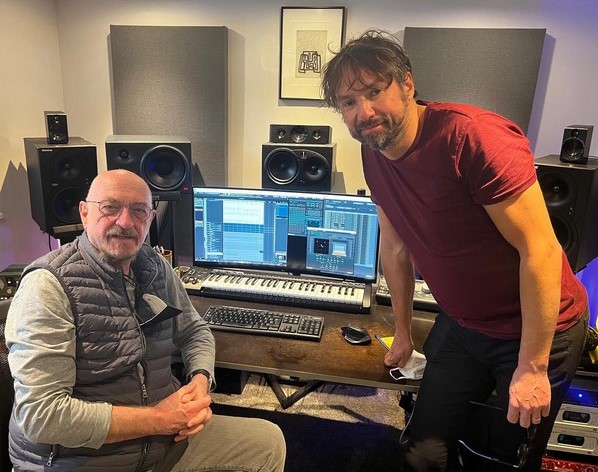
What I’ve noticed, and I’ve talked about this in the online community, is that the more immersive and daring the spatial placement is, the more people appreciate it. I’ve learnt that it’s perfectly okay to place elements behind, above and around you because we’re no longer bound by the traditional stereo paradigm. It’s a completely different, immersive experience. It’s worth noting that this technology is still relatively new and we’re only now seeing true Dolby Atmos reverb and similar innovations. It is an exciting time for these developments and there is a lot of potential for further research.
As far as sound quality is concerned, we have all learnt to appreciate high-quality sound since the days of SACD and DVD-Audio. Unfortunately, the music industry has not really utilised these opportunities. When did you start working with multichannel sound?
I started with multichannel sound around 2012. I was on tour with a band called Katatonia, who happened to be signed to the same label as me, KSCOPE. It was an acoustic tour and I mixed the band’s live album. The label asked me if I could do a 5.1 mix, even though I’d never done it before. So I invested in some speakers and asked others who had experience with 5.1. Fortunately, the software I was using, Cubase, supported 5.1 out of the box – now I’m using one that supports Dolby Atmos, of course. So I just did it. That first 5.1 mix was released on DVD-Audio, and I even made some DVD-Video versions for artists who wanted to release in 5.1, even if their audience couldn’t play DVD-Audio. It’s a bit of a technical process, but I think lossy DTS still sounds pretty good.
What do you think distinguishes DTS from Dolby as a multi-channel format?
Well, I’ve mostly worked with DTS, but I know some players can downmix Atmos to Dolby HD, which sounds pretty good too. Ultimately, the choice between DTS and Dolby depends on what the artist or label prefers. I have found DTS to be a reliable format for my 5.1 mixes.
With Atmos becoming increasingly popular in the consumer market with streaming and readily available hardware, how do you see it developing in the future?
This is an interesting development. I’ve spoken to engineers working on Atmos mixes and there are some challenges. Firstly, there are two different listening experiences to consider when mixing for Atmos: the immersive 3D audio in a dedicated room and the binaural experience for headphone users. These are two completely different worlds, and reconciling them can be a challenge. Secondly, streaming platforms often have strict guidelines for audio playback, which can be limiting. I would like to see more flexibility in the provision of immersive audio to make it easier for artists and labels to publish high-quality content.
Indeed, it can be a challenge to find the right balance between the two listening experiences. In terms of headphones and the binaural format, is there room for improvement and innovation to optimise the listening experience?
Absolutely, there is room for innovation in the field of binaural audio. We currently have some control over positioning and spatialisation, but I would like to see more options for precise control. Binaural audio has the potential to play an important role, especially for headphone users. The challenge is to enable a seamless transition between immersive and binaural modes without compromising the listening experience.
I think that two separate mixes, one for immersive and one for binaural listening, could be a way to effectively address both target groups.
That’s a great idea. It would allow artists and sound engineers to create the best possible experience for each medium. I would like to see more tools and platforms that make this easier.
At the end of the day, the artist has to sell products. How do you think young bands and artists can be helped to release their music in the best possible quality alongside streaming?
I actually found myself in an online discussion in the audio community. The discussion centred on the relatively new software I use. To be honest, I think Blu-ray is fantastic as a medium, but the licence costs can make it a bit difficult for small artists. Even with my last solo album, my label couldn’t afford to release it on Blu-ray. It is only available as a stream, which can be frustrating.
Nevertheless, I would really like to see an easier way to create and distribute Dolby Atmos master files. It would be
fantastic if listeners could download these files and play them on different devices, be it on a simple USB stick or even burned onto a Blu-ray disc. The goal is to make it incredibly user-friendly so that when people hear about an album, they can access it instantly, in a high-quality, lossless format.
At the moment, the process of converting a Dolby Atmos master file into an easily accessible format is not as straightforward as I would like it to be. There are some websites that convert these master files into MKV video files that you can then download, but I think there is still room for simpler solutions.
It is important to maintain the creative flow in the early stages of music creation. What advice do you have for aspiring musicians and sound engineers who want to follow in your footsteps?
My advice would be to never stop learning. The world of music and audio production is constantly evolving and new technologies and techniques are emerging. Stay curious and keen to experiment. Don’t be afraid to make mistakes, because these are often the most valuable lessons. And above all, always put the music itself in the foreground. Technical skills are
important, but they should support the creative process and enhance the emotional impact of the music.
Excellent advice, Bruce. Thank you for sharing your insights and experiences in the world of music and sound engineering with us. It was a pleasure talking to you.
You’re welcome, Christoph. It’s been a pleasure talking to you too.

